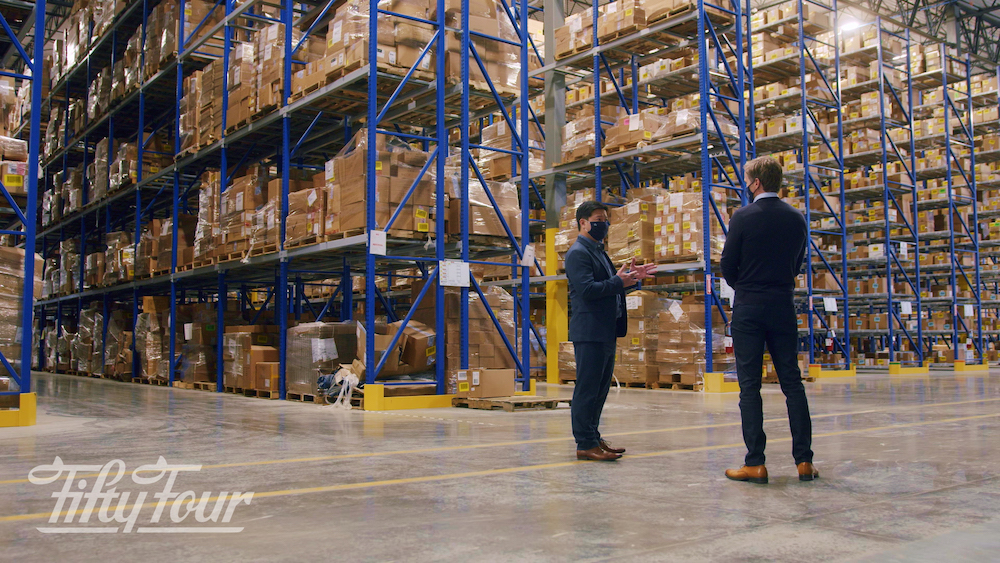
As a business owner, you strive to find the best ways to optimize your processes. In the material handling and distribution center warehouse industries, smooth and well-oiled operations are what we all shoot for in our daily activities. But the nature of business is that we’ll see fluctuations, peaks and ebbs, and constant change. How quickly and easily you can adapt is a tell-tale sign of how successful your processes are as your company moves through time. What it boils down to is constant monitoring of your business to know if you are doing it right – or not.

Indicators to Keep Your Eye On
At the core of any business are the signs that indicate good health or poor health. As an owner or stakeholder, you should have eyes on these indicators all the time. Remember, when your indicators go up and down, you can learn extremely valuable information that will help you be a better business person. A few of these indicators include:
- Financials – There are three key things you should watch to understand how your company is doing financially. These are the income statement, balance sheet and cash flow statement. If you want to stay in business and be healthy, you’ve got to have a good handle on the money coming and going out.
- Customer Feedback – Are your customers happy? Because if they aren’t, there’s a problem that needs to be fixed. Don’t get so far removed from your customers that their complaints are not reaching your ears. Happy customers are loyal customers who stick around and you should know that it’s a lot cheaper to cater to existing customers than to get new customers.
- New Customers – While it’s certainly cheaper to sell to existing customers, you still need to be constantly growing your customer base. Customer retention is great, but in order to grow, you need to also focus on customer acquisition.
- Due Diligence with Employees – Don’t forget to monitor and grade your staff. Nobody likes performance reviews, but if you never grade your employees against a set of expectations, you won’t be able to weed out the ones who are costing you time and money. Just as important, you need to find out who your excellent staff is, so you can reward them (or lose them to a competitor, if you don’t).
- Eye on Your Market – If you allow yourself to become complacent, you may miss a great opportunity to take advantage of something changing in your market. A great example is e-commerce. Many of us in the material handling, DC and fulfillment industry were caught by surprise when e-commerce took the leap it did. Others were already sounding the news and were much better prepared. It’s better to not be caught by surprise when your industry takes a 180.
As a businessman, it’s easy to let others take over some of these functions while you spend more time coming up with new ideas to make your company great. And it’s fine to delegate – as long as you keep a pretty regular eye on the important indicators that can signal trouble before it becomes a major problem.
Key Performance Indicators for the Warehouse
Many companies use Key Performance Indicators (KPIs) to measure their performance. Understanding what should be listed and measured in your KPIs is at the heart of understanding how to use warehouse success metrics to constantly improve and increase productivity and efficiency.
The most basic function of a material handling warehouse is to store products and goods. But first they have to get there (ordering and receiving), next they have to be put away (stocking), and finally, they have to be sent to their destinations (picking and shipping). All of this is governed by the Big I – inventory. In order to fulfill the basic warehouse tasks, you’ve got to know what you have and where it is located.
Let’s look at some of the KPIs that can measure warehouse success – or failure. And some new ways to approach measuring warehouse success metrics.
Inventory KPIs
We use our material handling, DC and fulfillment center warehouses to store goods. But it’s imperative that we know what we are storing and where it’s located in order to be able to do our company business. We’ve probably all been in situations where a warehouse isn’t being utilized at its highest level – it leads to chaos, wasted time, spoilage and most of all, lost money.
What are some of the important warehouse inventory KPIs we need to know? First, we need to know how accurate our inventory is – is it a true reflection of what’s in the warehouse? We need to be able to measure what’s being lost or stolen (shrinkage). How much is it costing us to keep inventory – are we losing money on items that aren’t moving fast enough?
There are plenty of inventory KPIs that will help us get a better idea of the well-being of our warehouse operations.
Receiving KPIs
Your receiving KPIs should tell you how effective your processes are at bringing goods into your material handling, DC or fulfillment center warehouse. The bottom line is finding out how much your company is spending on the process of receiving – from the time a truck is at your dock to the time its load is properly stored in the warehouse. There are several steps along the way and everybody who plays a role in these steps should understand there is a KPI associated with each step. Only when you learn how to measure the efficiency and accuracy of your processes can you understand how to make them better – and more cost effective.
Picking KPIs
Depending on your warehouse layout, your picking teams should have a clear map of how to tackle the shift’s orders. Your KPIs for picking will include measuring the amount of time it takes to find and pick orders, as well as how much of your product is shipped without damage. Are your teams picking the right product? Are they accomplishing this in a timely manner? If not, what’s happening? Do you need to upgrade your equipment? Change your warehouse layout? Using KPIs to measure your picking process will show you exactly where you may have problems – and where things are going well.
Safety KPIs
It should be at the top of your list. Warehouse accidents are all too frequent and your overall mentality should always be that everybody goes home at the end of their shift. There are many KPIs that can help you keep tabs on the safety of your warehouse, including number of days without accident, time since last accident and more.
Overall Functionality KPIs
In the end, your warehouse needs to function as a well-oiled machine: One big engine with lots of moving parts. Each independent part has a role to play to keep the engine running smoothly, productively and efficiently. All of those parts should have a KPI attached to it. The information you get will be priceless when you are trying to grow your business.
No matter how conscientious you are and how much time you spend at the warehouse, you would be hard pressed to keep an eye on all your KPIs. Luckily, with today’s technology, an investment in a warehouse management system (WMS) can help you keep track of your KPIs, and so much more. And you don’t have to break the bank to get a WMS that fits your needs. Whether you have a smaller, mid-size or large material handling or DC warehouse, taking advantage of the technology that’s out there can help you take the next step. And, you can get some answers and information without spending a dime. Check with 54 Intralogistics for a free warehouse report that can show you ways to improve.
54 Intralogistics has warehouse professionals all over the U.S. If you are curious about improving the logistics of your operations, reach out today.
